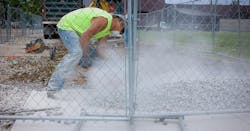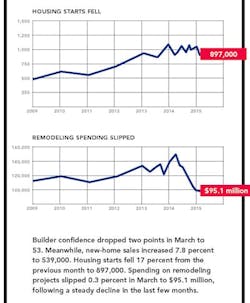The proposed silica standards from the Occupational Safety and Health Administration (OSHA) will cost the U.S. construction industry $5 billion per year, which is $4.5 billion more per year than what the federal agency estimated, according to a new report from the Construction Industry Safety Coalition (CISC).
OSHA projects that the proposed rule—intended to drastically reduce the permissible exposure limit (PEL) of crystalline silica for the construction industry—would cost the industry about $511 million annually.
The cost and impact analysis from OSHA reflects a fundamental misunderstanding of the construction industry and includes major errors and omissions that account for the discrepancies noted in the CISC report.
The CISC estimates that about 80 percent of the cost ($3.9 billion per year) will be direct compliance expenditures such as additional equipment, labor, and record-keeping costs. The remaining 20 percent ($1.05 billion per year) will come in the form of increased prices that the industry will have to pay and pass onto consumers in the form of higher prices for construction materials and building products such as concrete block, glass, and roofing shingles.
Significant Job Losses
Not only will the proposed rule be more expensive than originally estimated, it will translate into significant job losses for the construction industry and the broader economy. The CISC estimates that the proposed regulation will reduce the number of jobs by more than 52,700 yearly.
That figure includes full-time construction and industry-related jobs as well as losses in non-construction sectors. Factoring in the many part-time or seasonal jobs, that number could increase to close to 80,000 lost positions.
“We are concerned about the misguided assumptions and cost and impact errors that OSHA relied upon in creating this proposed rule that will significantly affect our industry,” says National Association of Home Builders Chairman Tom Woods, a builder from Blue Springs, Mo. “This report reveals the critical need for OSHA to withdraw its proposed rule until it can put forth a technologically and economically feasible rule that also works to improve industry workers’ health and safety.”
To read the full CISC report, which was also submitted to OSHA, visit nahb.org/silicareport. PB
---
About NAHB
The National Association of Home Builders is a Washington, D.C.-based trade association representing more than 140,000 members involved in remodeling, home building, multifamily construction, property management, subcontracting, design, housing finance, building product manufacturing, and other aspects of residential and light commercial construction. For more, visit nahb.org.


